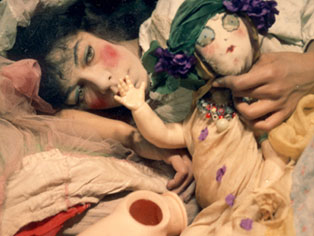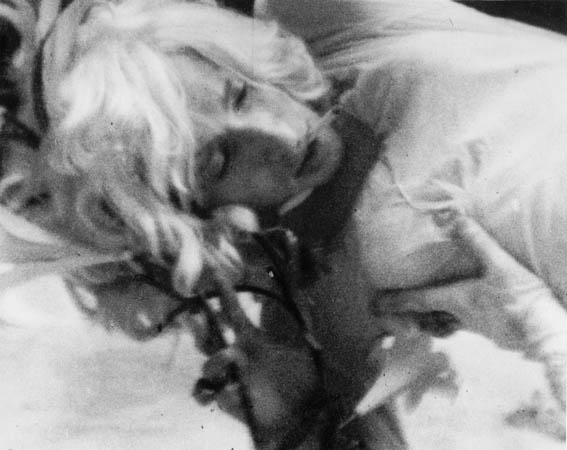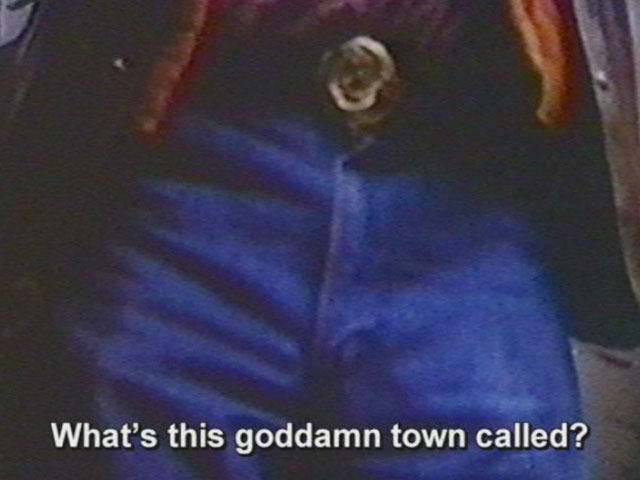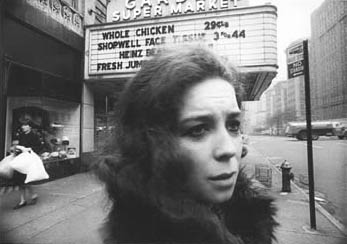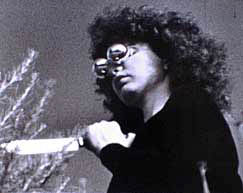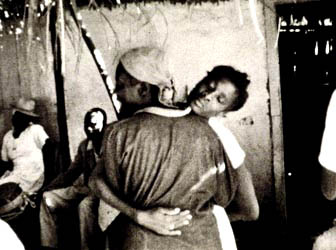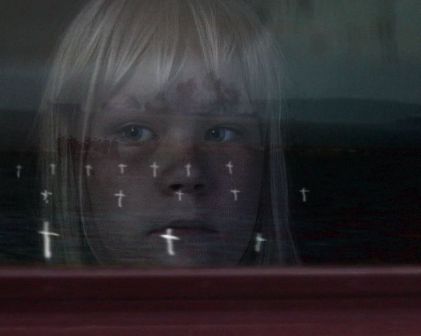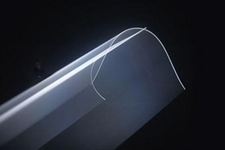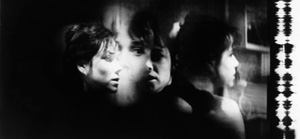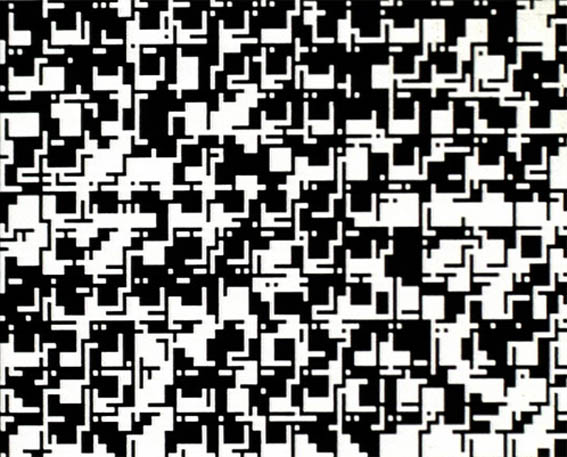Films of and by Jack Smith
London Lesbian & Gay Film Festival
Saturday 31 March 2007
Saturday 31 March 2007, at 4pm, NFT 3
JACK SMITH AND THE DESTRUCTION OF ATLANTIS
Jack Smith - self-made creature of fantasy, documenter of real magic - is best-known for his baroque orgiastic celebration Flaming Creatures, a film banned in 22 states and four countries. Adopted as a cause celebré, Smith was so disgusted with the commercial art machine, that he never again made another 'finished product'. An anarchist, Smith declared art his only authority as he constructed fantastical utopias populated with bejewelled animals, a coterie of costumed 'creatures', and magical debris gathered from downtown New York. Although increasingly bitter as others cannibalised his work, he never stopped his manic quest for glamorous liberation. An assemblage of archival photographs, rare film and audio clips, Jordan's film offers a sumptuous portrait of this mystic and madman who irrevocably altered the fields of experimental theatre, photography, performance and avant-garde film. (Kyle Stephan)
Jack Smith and the Destruction of Atlantis
Mary Jordan, USA, 2006, 96 mins
Saturday 31 March 2007, at 6.10pm, NFT 3
FLAMING CREATURES & BLONDE COBRA
A double bill of two gloriously primitive flicks that define and transcend the idea of 'underground' film. Flaming Creatures, Jack Smith's impoverished, epic fantasy of Babylonian proportions, is a decadent celebration of the joy and torment of existence. This bleached-out orgiastic rite, all limp penises and shaking breasts, is populated by a blonde vampire, exotic Spanish dancers and androgynous bohemian poseurs. Blonde Cobra, as close to an authentic portrait of Smith that we have, is propelled by a delirious monologue (witness the scurrilous tale of Madame Nescience and Mother Superior) and was shot amongst the rubble of his apartment. The two films were premiered together in April 1963, and remain fresh, provocative and startlingly original over 40 years later. (Mark Webber)
Blonde Cobra
Ken Jacobs & Bob Fleischner, USA, 1959-63, 33 mins
Flaming Creatures
Jack Smith, USA, 1963, 45 mins
at
BFI Southbank
Belvedere Road, South Bank, London, SE1 8XT
Nearest Tube: Waterloo / Embankment
MAP OF AREA
Tickets: £8.50 / £6.25 concessions
Box Office: 020 7928 3232
www.llgff.org.uk
...
AND THERE'S MORE ... FREE screening of Ken Jacobs' Two Wrenching Departures (1957/2006, featuring Jack Smith) at the Roxy Bar and Screen on Tuesday 3 April 2007.
